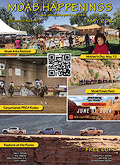|
 Regular grooming is more than a cosmetic routine—it’s vital for maintaining your pet’s skin health. Brushing both cats and doAgs helps keep their skin clean, nourished, and protected while strengthening your bond through touch and attention. Regular grooming is more than a cosmetic routine—it’s vital for maintaining your pet’s skin health. Brushing both cats and doAgs helps keep their skin clean, nourished, and protected while strengthening your bond through touch and attention.
Why Skin Health Matters
Healthy skin is your pet’s first defense against infection, parasites, and irritation. Grooming supports that by:
Preventing skin conditions: Regular brushing reduces dryness, flaking, and matting, which can lead to inflammation or infections.
Improving coat quality: A healthy coat is a sign of healthy skin—smooth, soft, and free of buildup.
Allowing early detection: Finding lumps, bumps, or parasites early makes treatment easier and more effective.
Skin Benefits of Brushing
• Removes Dead Skin & Debris.
Brushing clears away dead skin cells, dander, and trapped dirt that can clog pores and irritate your pet's skin.
•Boosts Circulation.
Gentle brushing increases blood flow, delivering nutrients and oxygen to skin cells, promoting repair and healthy growth.
• Distributes Natural Oils
Brushing spreads natural oils from the skin through the coat. This helps moisturize the skin and gives fur a healthy shine.
•Identifies Skin Problems Early
Routine grooming gives you a chance to notice fleas, ticks, cuts, hot spots, or dry patches before they worsen.
Choosing the Right Tools
Different coats need different brushes. Using the wrong one can be ineffective—or even harmful.
For Dogs:
•Slicker Brush: Removes mats and tangles; ideal for long or curly coats.
•Bristle Brush: Good for short-haired breeds; helps with dirt and loose hair.
•Deshedding Tool: Excellent for breeds that shed heavily (e.g., Labs, Huskies).
• Rubber Curry Brush: Gentle on the skin; doubles as a massager and bath brush.
For Cats:
Fine-Toothed Comb: Ideal for removing loose fur and checking for fleas.
Slicker or Pin Brush: Great for long-haired cats like Persians or Maine Coons.
Rubber Grooming Glove: Perfect for short-haired or sensitive cats.
Technique: How to Brush for Skin Health
Brushing doesn’t have to be stressful. In fact, with the right technique, it becomes a calming ritual.
• Use high quality tools that are CLEAN: In grooming quality matters. Make sure you clean your brushes and combs. I recommend a gentle dish soap and good rinse with warm water to help dissolve the oils that will build up from your pet's coat. Then air dry to prevent mold. Do this at least every few sessions to ensure best results. Replace them if they become brittle, or any part breaks.
• Create a calm space: Choose a quiet area. Let your pet sniff the brush and become comfortable with it.
Start slow and be gentle: Begin at the neck and brush in the direction of hair growth. Use light, even strokes—never yank or pull.
• Don’t ignore hidden areas: Pay special attention to the belly, armpits, behind the ears, and under the tail. These spots are prone to tangles and irritation.
Work out mats carefully: Use a dematting comb or your fingers. Never cut mats with scissors close to the skin—it’s easy to cause injury.
• Check for skin issues as you go:
° Redness, swelling, or flakes?
° Bumps or lumps?
° Fleas, ticks, or dry patches?
These should be evaluated by a veterinarian if they persist.
How Often Should You Brush?
Brushing frequency depends on the breed and coat type:
•Long-haired dogs or cats: Daily brushing prevents painful mats and keeps skin breathable.
•Short-haired pets: Brush once or twice a week to remove dead hair and stimulate the skin.
•Older or less-mobile pets: May require more grooming assistance since they groom less on their own.
Bathing & Skin Support Tips
Brushing is essential, but bathing plays a supporting role in skin care:
• Bathe every 4–6 weeks, unless your pet gets particularly dirty.
• Use only pet-formulated, pH-balanced shampoos. Human products can strip natural oils or cause irritation.
• Avoid overbathing, which can lead to dry, itchy skin.
• Conditioners and sprays with aloe, oatmeal, or coconut oil can soothe dry or sensitive skin.
Grooming as Wellness
Regular brushing is more than maintenance, it’s preventive care. With each grooming session, you’re:
• Supporting healthy skin and coat
• Preventing future medical issues
• Strengthening the trust and bond between you and your pet.
Make grooming part of your routine. Just a few minutes a day with the right brush and a gentle hand can go a long way in keeping your pet’s skin healthy and their tail wagging.
Tip: Ask your groomer or local pet store team for a coat-type-specific brush recommendation during your next visit.
|

 Regular grooming is more than a cosmetic routine—it’s vital for maintaining your pet’s skin health. Brushing both cats and doAgs helps keep their skin clean, nourished, and protected while strengthening your bond through touch and attention.
Regular grooming is more than a cosmetic routine—it’s vital for maintaining your pet’s skin health. Brushing both cats and doAgs helps keep their skin clean, nourished, and protected while strengthening your bond through touch and attention.